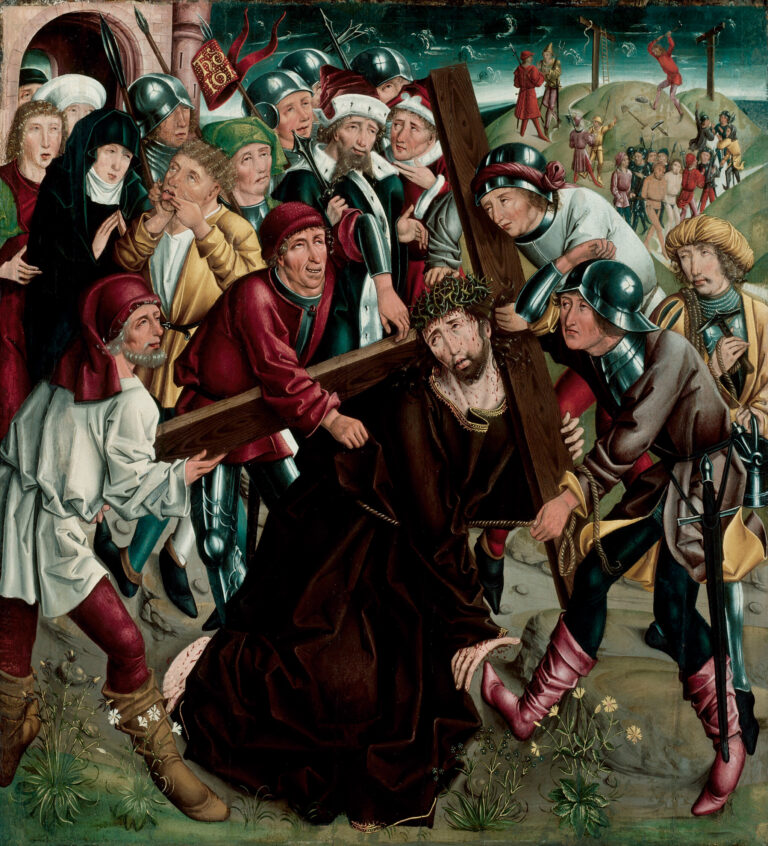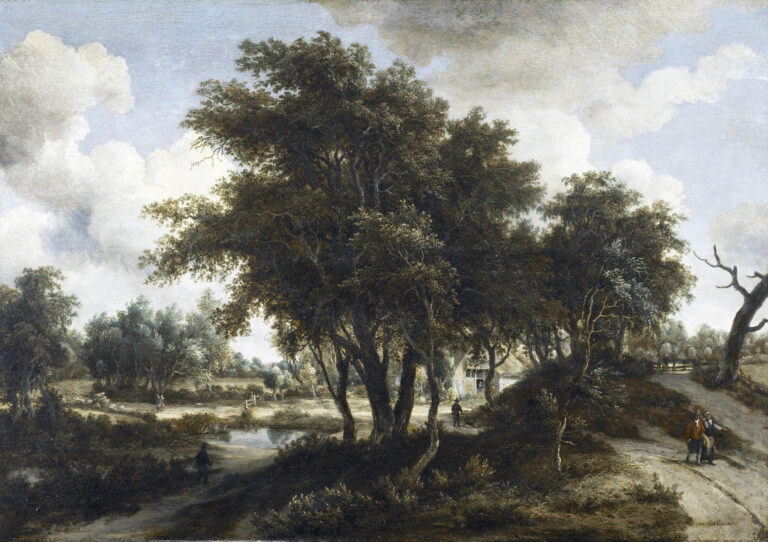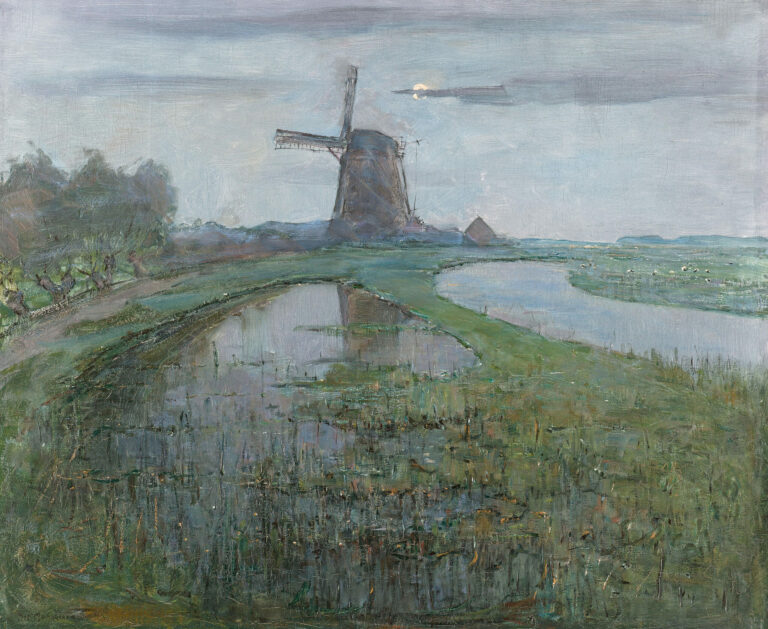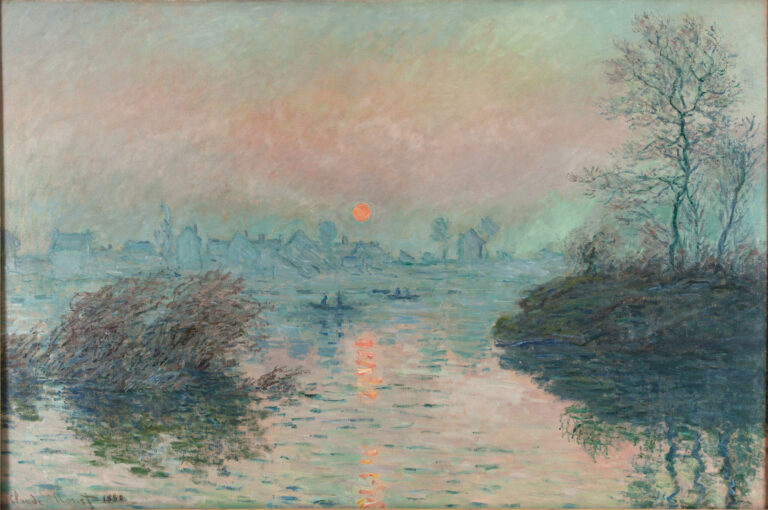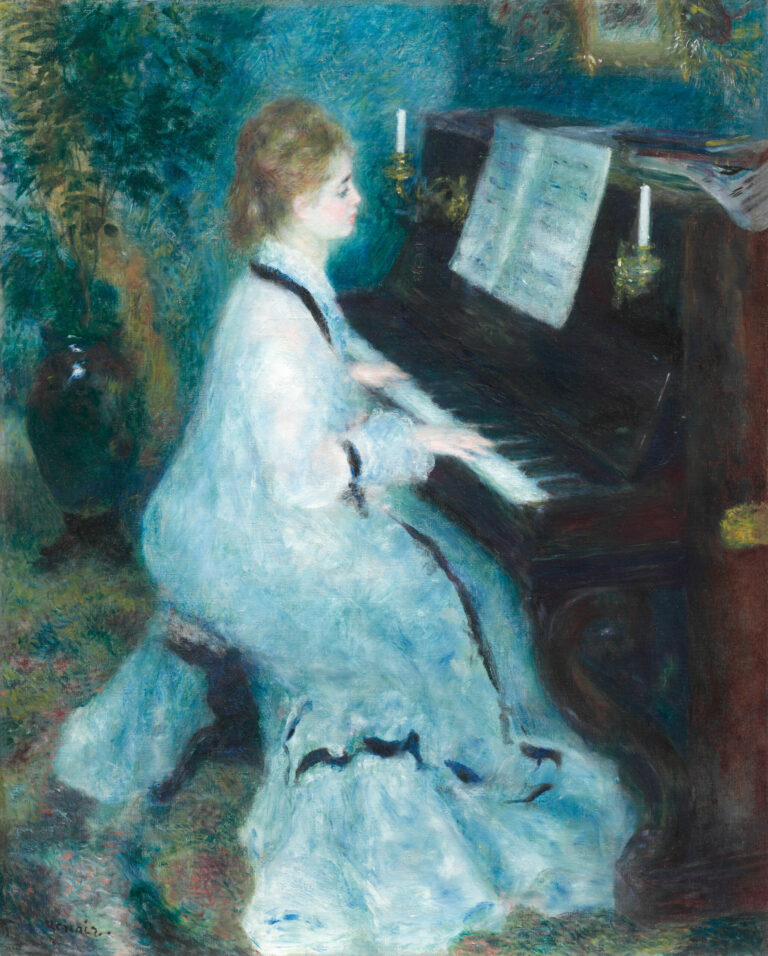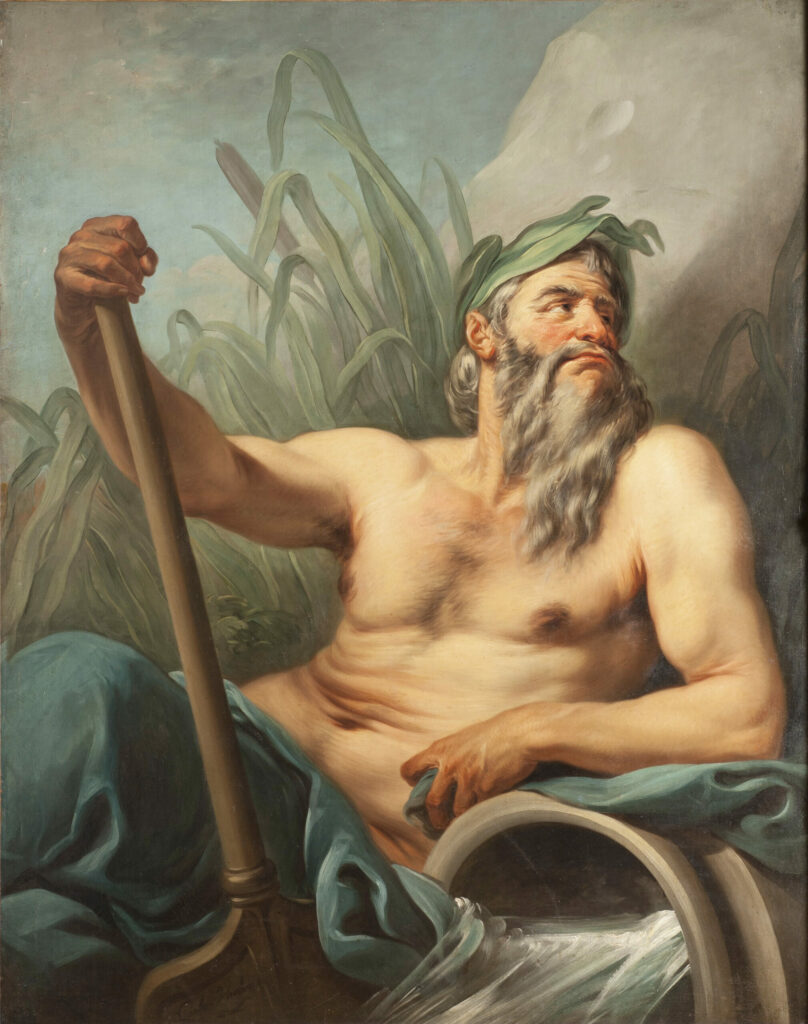
Carle van Loo demonstrates here the French decorative art of the 18th century in his allegorical representation of a river deity.
Exhibited at the Paris Salon in 1740 under the title “A River,” this painting illustrates the ancient iconographic tradition revisited through Rococo aesthetics. The masculine figure, with his powerful physique and majestic beard, symbolizes authority over the waters. His semi-reclining posture evokes the fluidity of the element he governs, while the overturned urn, traditional attribute of aquatic deities, allows the life-giving water to flow forth. The blue-green drapery recalls the waves, the luxuriant vegetation evokes the fertility of irrigated lands. The possible influence of Rubens’ Marie de’ Medici cycle is evident in the monumentality of the composition and the fleshy treatment of the figure, a French adaptation of the Flemish Baroque tradition.
Further information
- River God, by Carle van Loo, circa 1740, Nationalmuseum, photo Hans Thorwid, public domain
- 144 x 113 cm
- https://collection.nationalmuseum.se/en/collection/item/17850/
- Nationalmuseum, Stockholm, displayed in room 1603, 18th century
Carle van Loo (1705-1765) embodies the pinnacle of French decorative art of the 18th century. Initially working with his brother Jean-Baptiste van Loo, he perfected his art during a decisive stay in Italy (1727-1732) where he studied the masters of the Renaissance and Baroque periods. Appointed First Painter to King Louis XV in 1762 and director of the Royal Academy of Painting, he dominated the Parisian art scene for over thirty years. His considerable output—history paintings, mythology, genre scenes, monumental decorations for Versailles and royal châteaux—reveals a synthetic style marrying the grandeur of the Grand Siècle with Rococo grace. The official painter par excellence, van Loo knew how to adapt the classical heritage to the tastes of his era, creating an elegant pictorial language that influenced an entire generation of European artists.

